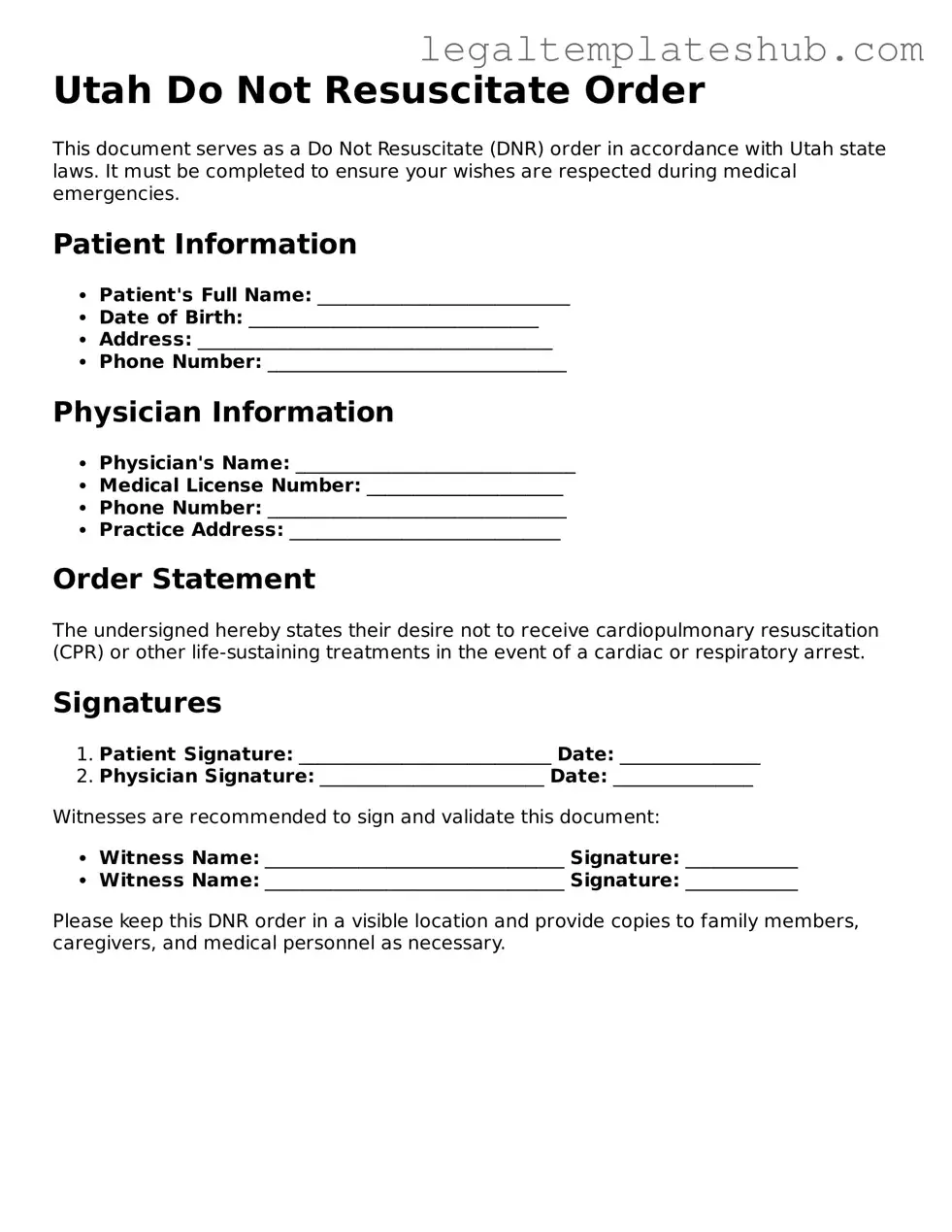Printable Do Not Resuscitate Order Document for Utah
A Do Not Resuscitate (DNR) Order form in Utah allows individuals to express their wishes regarding medical treatment in the event of a cardiac arrest or respiratory failure. This legal document ensures that emergency medical personnel understand the patient's desire to forgo resuscitation efforts. To take control of your healthcare decisions, consider filling out the form by clicking the button below.
Access Editor
